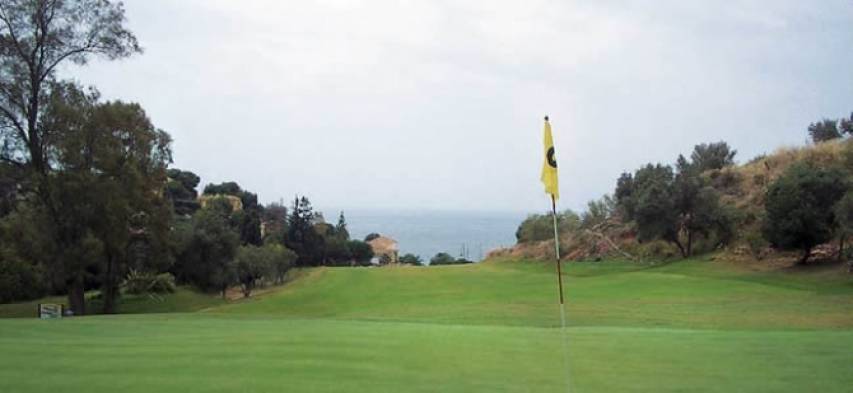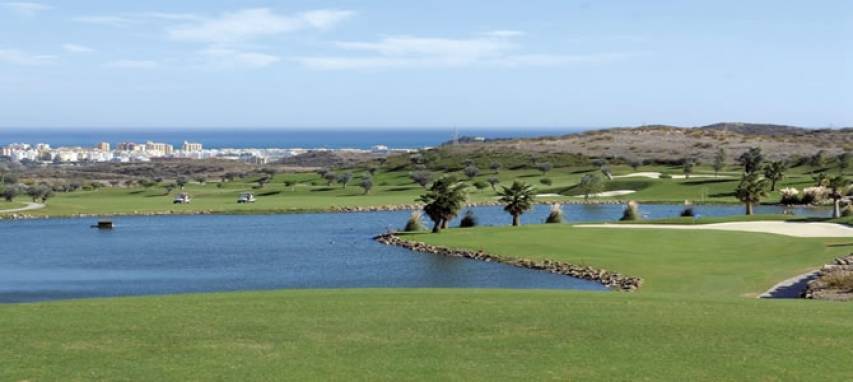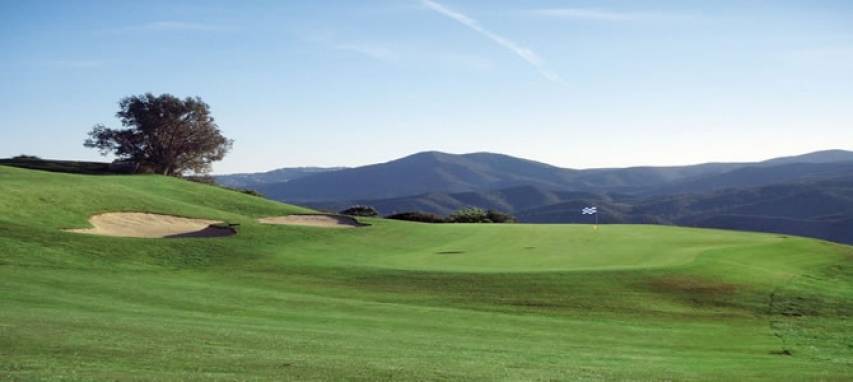After trying in vain, time after time, to check the latest world ranking, the page was finally updated and María could not believe what was listed in front of her eyes: she had become the world number two. She had thought, at best, she could rise 10 or so places and – if lucky – make it to eighth – but fortune smiled on the young golfer from Cádiz province.
At 17 years, the many hours, days, months and years of hard effort and channelling her natural talent for golf through coaches, had been rewarded.
A resident of Guadiaro, in San Roque municipality (the birthplace of numerous top golfers), María Parra is enjoying a dream come true that could have been even more pleasurable and long-lasting if she had been able to attend university in the United States this year. The leap across to the other side of the Atlantic, where the best amateurs enjoy much better possibilities of forging solid futures as professional golfers, will have to wait until María achieves a higher level of English – that necessary for being accepted into a US university. Until that moment arrives, the spirited María continues to practise with her heart and soul under the guidance of a coach – Juan Antonio Marín, from the SIGA Sotogrande golf academy – who is extracting his student’s extraordinary golfing qualities to the maximum.
Born on 4 December 1997, María began carving out her golfing future at just six years of age, when she asked her brother – who was six years older and played golf at La Cañada – to let her see what the game was all about. She picked up a club and on her first shot hit the ball more or less okay. She caught the bug and her grandmother, who had been working at Royal Sotogrande Golf Club for 40 years but had never played golf, began taking her to La Cañada every day. She quickly started to shine and win championships in Andalucía and Spain. Four years ago she won a SIGA qualifying tournament, she was granted a scholarship and since then she has been under its sports “jurisdiction”. “And I’m very happy.”
In 2013 she moved to Madrid to join the Blume National Golf Academy, a high-performance sports centre, and she remained there for two years. “It was a great opportunity for me to enter the academy,” says María, who is appreciative both of the coaches she had in Madrid and those who helped train her previously. “I’ve learnt quite a lot here thanks to Juan Antonio (Marín), Antonio Arjona and Sonia (both from La Cañada), from all the coaches I’ve had here. I’ve learnt a lot from Juan Antonio. When I began with him at SIGA I had a six-handicap and within one year I got that down to zero. I also learnt a lot at Blume with the coaches there: Marta Figueras, Kiko Luna, Salva Luna... the psychologist Óscar del Río and the physical trainer Paco Fernández also helped me improve a lot in competitions.
You are having an exceptional year of victories…
Yes, it’s true that it’s been a very good year – I’m very pleased. I’ve won the Andalucía Cup, the Valencia Cup, the European under-18 teams championships, the European women’s individual title and the Spanish under-18 championship.
What does it mean to you to have risen to number two in the world?
At the start of the year I was in 19th place and after winning the European championship I thought I would climb further, but not so high. I thought I would be between eighth and 10th, and it was a surprise, because I was checking out the ranking all day to see if it had been updated, and when I finally saw that I was number two in the world I couldn’t believe it. However, it’s the most important tournament in Europe, and that’s why it allocates so many points. It was incredible. I’ve been saying to (coach) Juan Antonio all year that I have to make it to number one.
What possibilities do you have of rising to the highest ranking? What do you need to win to achieve that?
It’s quite difficult because the number one is in the US and over there the championships have more points. This year it’s impossible because the leader is 35 points ahead and that’s a lot. Finishing in the top-10 in a championship over there could give you the same number of points as winning a tournament here. It’s very difficult.
What are your immediate plans?
I have the Solheim Junior and later the Texas championship, and after that I want to study something, but I still don’t know what. I don’t have any idea; I’ll have to think about it very carefully. The problem is I can’t do Selectividad (university entrance exam) because it coincides with an important championship in Germany. So it can’t be university. I don’t know if I’ll do a higher-education module course or perhaps spend the whole year studying English, and next year prepare myself for Selectividad. I wanted to go to the United States this year – I had a university and everything – but you have to pass an English exam, the SAT, and they require a very high level. I’ve done the exam a couple of times but never passed. So maybe I’ll study to prepare myself and try again in September 2016, to go to a US university.
And becoming professional?
I think I’ll turn professional within two years, at the end of next year or at the start of the 2017. If I manage to go to the US I’ll continue a couple more years as an amateur because over there it’s easier to be an amateur than a professional when you’re at university, and when I finish my studies I’ll turn professional.
Does remaining in Europe limit the possibilities for a golf professional who wants to triumph at a high international level?
Quite a lot. The best thing is to play in the US but if I can’t I’ll try on the European Tour.







